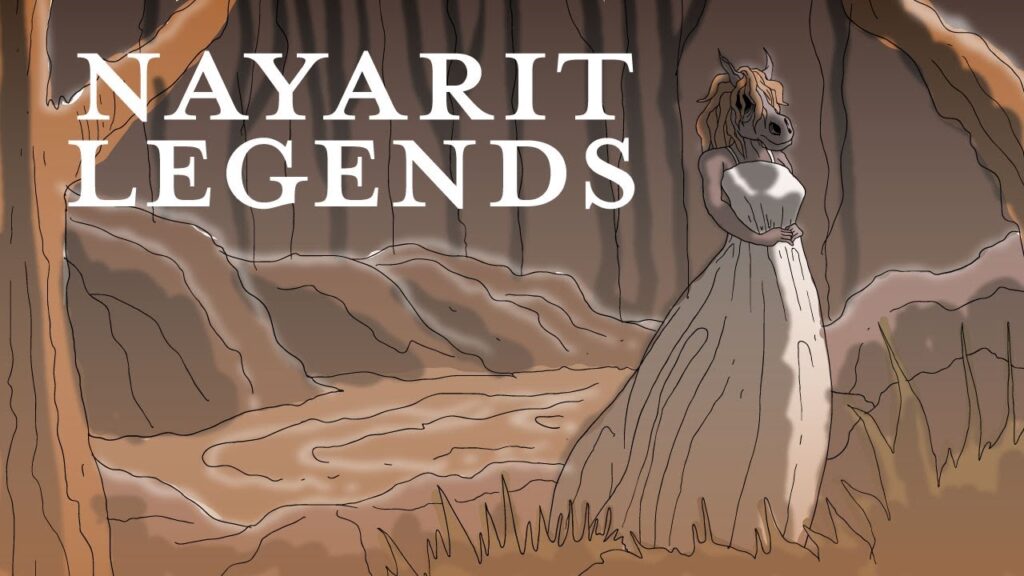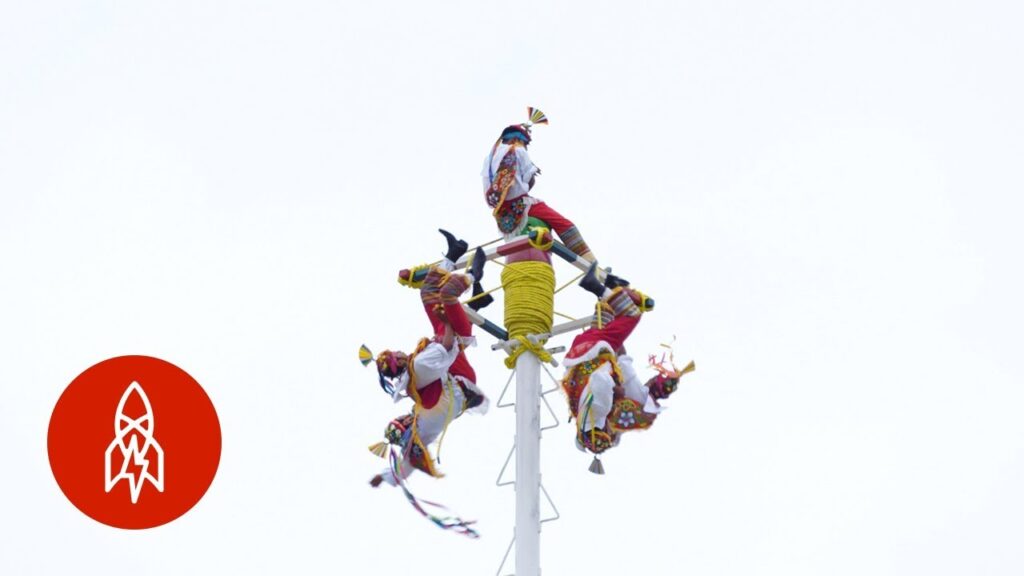Unveiling the Mysteries of Mexican Legends
Mexico’s rich tapestry of culture and history is embroidered with a collection of legends that have been passed down through generations. These tales blend the supernatural with the everyday, offering a glimpse into a world where myth and reality intertwine. Among the bustling cities and serene landscapes, the whispers of ancient stories continue to captivate travelers from near and far. Exploring these legends not only provides entertainment but also a deeper understanding of Mexico’s diverse cultural heritage.
The legend of La Llorona, the Weeping Woman, is a haunting tale that resonates through the valleys of Mexico. Said to be the ghost of a woman who lost her children, her mournful cries are a warning to those who hear her. As travelers seek the thrill of encountering La Llorona, they are drawn to the waterways and canals, especially in Mexico City, where her presence is most often claimed. This tale is a poignant reminder of the sorrow and loss that emerge as potent themes in Mexican storytelling.
El Chupacabra, a creature as mysterious as it is terrifying, is rumored to inhabit the arid regions of Mexico. Claims of livestock found drained of blood have given rise to numerous accounts of this beast’s nocturnal exploits. Adventurers and cryptozoologists alike are drawn to the challenge of elucidating the truth behind this modern legend. The search for El Chupacabra has become a journey of adventure, enveloped in the rustic beauty of the Mexican countryside.
One cannot delve into Mexican myths without encountering the tale of El Cucuy. Often described as Mexico’s boogeyman, El Cucuy is a figure used to inspire fear and good behavior in children. The stories of this shadowy creature vary from region to region, but his ominous presence is a common thread that weaves through the cultural fabric of the nation. Those who venture into Mexico’s rich traditions often find themselves fascinated by the evolution of El Cucuy’s tale across time and geography.
The ancient civilizations that once thrived on this land have also left behind their own legends, such as the story of Quetzalcoatl, the feathered serpent deity of the Aztec and Toltec peoples. As a god of wind, air, and learning, Quetzalcoatl’s lore is interlaced with the history of these great civilizations. Uncovering the layers of meaning within this deity’s tale provides insight into the spiritual life of Mexico’s ancestors. For the modern traveler, tracing the legends of Quetzalcoatl becomes a journey through ruins and hieroglyphs, an adventure in unraveling the mysteries of the past.
The Rich Tapestry of Mexico’s Oral Tradition
Mexico’s oral tradition is a vibrant and dynamic force that has shaped the cultural landscape of the nation for centuries. Passed down from generation to generation, these stories, legends, and folktales are not just a means of entertainment but also a way to preserve history, moral lessons, and the very essence of Mexico’s diverse communities. Each tale is a thread in the intricate tapestry that vividly narrates the country’s rich past, embodying the struggles, joys, and dreams of its people.
Among the most beloved elements of this oral tradition are the folktales of mythical creatures and heroes that explain the unexplainable and teach values through their adventures. The legend of «El Chupacabra», a fearsome beast said to roam the countryside, has its roots in rural folklore, sparking both fear and fascination. Similarly, tales of «La Llorona», the weeping woman who wanders near bodies of water mourning her children, serve as cautionary tales that echo the blend of pre-Hispanic and Spanish cultural influences.
The art of storytelling in Mexico is also an interactive experience, with the oral narratives often accompanied by music, dance, and lively performance. The tradition of corridos, for example, are narrative ballads that recount the deeds of popular heroes, political events, and other significant occurrences, serving as an auditory history book that is both educational and entertaining. Such traditions are alive and celebrated during communal gatherings, festivals, and in everyday life, ensuring the continuation of Mexico’s rich oral heritage.
Ancient Stories Alive Today: Mexico’s Living Legends
Mexico, a land steeped in ancient lore, carries an air of mystique and romance with its long history of indigenous cultures and civilizations. These stories, passed down through generations, continue to pulsate through the country’s veins, offering travelers a glimpse into a past that refuses to be forgotten. The tales of gods and warriors, of creation and destruction, still resonate in the vibrant traditions and customs that define modern Mexico. Visitors are often spellbound by the way these legends have been woven into the fabric of daily life, creating an enduring connection between the ancestral and the contemporary.
Myths such as the tale of the feathered serpent god, Quetzalcoatl, permeate the remnants of towering pyramids and ancient ceremonial sites, while the legend of the spirited La Llorona echoes along moonlit rivers. Such legends are not only retold in the hushed voices of the elders or through colorful, spirited festivals; they also shape the identity of the Mexican people, providing a source of cultural pride and continuity. Each narrative brings with it a rich tapestry of symbolism and importance that has been artfully preserved in the retellings of today’s storytellers.
In the bustling markets and remote villages, one can’t help but feel the presence of these enduring legends. Handcrafted pottery, textiles, and jewelry often depict scenes from these ancient tales, serving as a tangible reminder of Mexico’s rich mythological heritage. For the adventurous spirit yearning to connect with Mexico’s profound and mystical past, engaging with these living legends is an essential part of the journey. It is through the understanding and appreciation of these stories that visitors can truly immerse themselves in the essence of Mexico’s soul, transcending beyond the realm of tourist and into the sphere of the time-honored traveler.
The Cultural Heritage of Mexican Narrative Tradition
The narrative tradition of Mexico is an immensely rich tapestry comprised of a myriad of stories, legends, and oral histories that predate even the written word. These stories often sprang forth from the heart of ancient civilizations such as the Maya and the Aztec, and have continued to evolve through centuries of conquest, colonization, and cultural fusion. The result is a uniquely Mexican blend of indigenous mythologies and Spanish influences, underscored by a powerful tradition of storytelling that continues to resonate in the modern day.
In many ways, the narrative tradition of Mexico serves as a bridge between the past and present, offering a glimpse into the values, beliefs, and struggles of generations gone by. Epic tales of gods and heroes like the Popol Vuh sit alongside the poignant chronicles of colonial resistance and the vibrant stories of everyday life that have been passed down through the ages. These narratives are not merely tales to entertain; they are the threads that weave the rich cultural fabric of the Mexican identity and continue to be a profound source of national pride and collective memory.
The art of oral storytelling, in particular, holds a place of honor within Mexican culture. Storytellers, known as «cuentistas», embody the living tradition of their ancestors, captivating audiences with their dynamic retelling of ancient fables and historical events. Often incorporating music and dance, these performances are more than entertainment; they are deeply embedded communal experiences that unite the listeners with a shared heritage. Through this timeless practice, the stories of Mexico are kept alive, continuously reinvigorated by each generation that tells and listens to them.
Exploring the Mythical Landscapes of Mexico’s Legends
Mexico, a land steeped in rich folklore and ancient mythology, invites adventurous souls to tread upon its legendary terrains. Beyond the bustling cities and sun-kissed beaches lies a world of mythical landscapes that have captivated the imaginations of generations. From the eerie silence of the deserts to the mysterious depths of the jungles, each footstep echoes with the whispers of Mexico’s ancestors, whose stories and myths breathe life into these enchanting spaces.
The peaks and valleys of the Sierra Madre mountain range are an explorer’s paradise, shrouded in mist and mystery. Amid this rugged expanse, local legends speak of hidden treasures and lost civilizations, waiting to be unraveled by those brave enough to venture off the beaten path. The powerful tales of Aztec warriors and Spanish conquistadores continue to echo among the craggy cliffs and silent forests, where centuries-old spirits are said to watch over the land.
In the southern state of Chiapas, the Lacandon Jungle conceals ancient Mayan ruins within its lush embrace. Here, visitors can sense the ever-present legend of the Popol Vuh, the sacred book of the Maya, narrating the creation of the world and the epic stories of heroic twin gods. The dense canopy and vibrant biodiversity only add to the mystery, as every flower and creature seems to hold a secret of the old world.
Not forgetting the aquatic realms, the cenotes of the Yucatan peninsula represent gateways to the underworld, known as Xibalba to the ancient Maya. These deep, crystal-clear sinkholes were once the centerpiece of Mayan cosmology, believed to be the dwelling place of the gods. Diving into these sacred pools offers a surreal experience, as if one is plunging into the mystic tales themselves, surrounded by the stalactites and stalagmites that form otherworldly underground landscapes.
The desert of Wirikuta, held sacred by the Wixáritari (Huichol) people, is yet another landscape imbued with legend. It is here during their annual pilgrimage that they follow the path of their deities, tracing the steps of the mythical deer where they believe life began. This journey, reflecting an inner quest for enlightenment, allows travelers to touch upon the fabric of the universe, as depicted in Huichol yarn paintings and vibrant beadwork that illustrate their rich mythological heritage.



